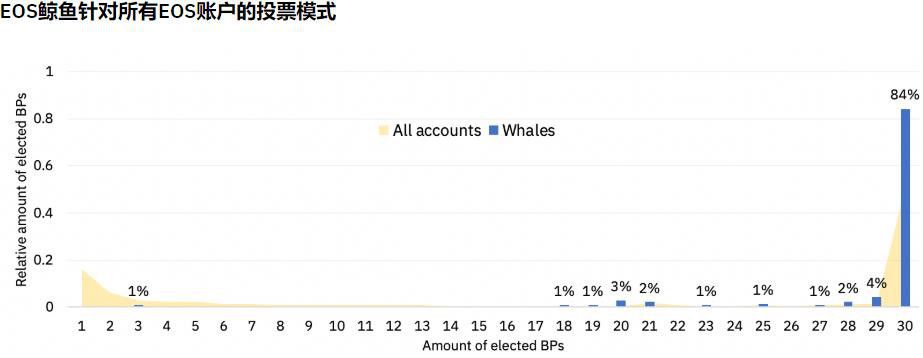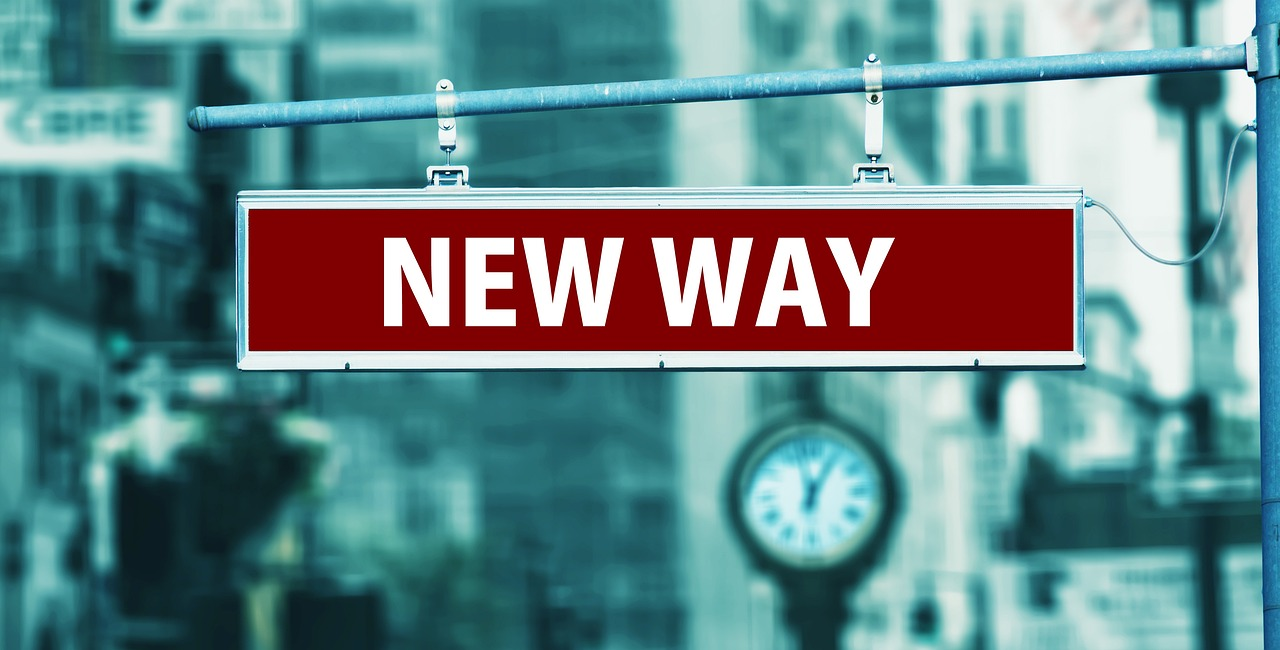"Steemit lightning seizure of power" has triggered a big discussion on public chain governance. Where does the individual "voting right" go?
Original: a poplar
On March 2, Steemit, using the DPOS consensus mechanism, suddenly staged a wonderful "House of Cards" plot:
The steem tokens of individual head exchange hot wallets suddenly intervened in Steemit witnesses (witnesses, similar to the super nodes in EOS, responsible for network block generation and motion management) in Power Up, with tens of millions of weights directly bloody washed The original witnesses (witnesses) pattern made all the original 20 witnesses (witnesses) instantly replaced.
The leader behind this "lightning seizure" was the Tron Foundation, which had just married Steemit. After 20 new witnesses (witnesses) exchanged blood, they immediately led the network upgrade and overthrew the community passed Soft Fork 22.2.
- EY and ConsenSys announce the launch of the baseline protocol to ensure the safe and efficient use of the Ethereum mainnet by enterprises
- Research | Interpreting the Prediction Market: Why is "stacking" important?
- Reflections on the "Wei Union Deletion Event": the advantages of blockchain technology and the disadvantages of blockchain industry

01 "Acquisition" between TRON Foundation and Steemit community 龃龉
The TRON Foundation and Steemit have witnessed this encounter between people. The roots can be traced back to the beginning of the Steem blockchain. The direct inducement originated from an acquisition :
On February 14, Ned Scott, the former CEO and co-founder of Steemit, announced on social media that Steemit was sold to Sun Yuchen, the founder of Tron-through this acquisition, the Tron Foundation also obtained a considerable share of steem tokens. Control and voting rights, although the two sides did not disclose how many steem tokens were specifically disclosed, but it is said that they were 65 million steem tokens that had been put on hold due to "pre-mining" disputes in the early days of network creation.
Due to historical factors, the community is divided on the voting rights of the 65 million steem tokens acquired and held by the TRON Foundation. They believe that they should not directly participate in community governance, and some community members are worried that the TRON Foundation is "revengeful." "Acquisition" will not bring long-term stable development prospects to the project.
Therefore, on February 24th, witnesses jointly launched Soft Fork 22.2, which mainly involves freezing the steem tokens of the corresponding accounts of the TRON Foundation (that is, the part that mainly buys steele.Inc for the TRON Foundation). steem tokens), with the intention of forcing both parties to sit at the negotiating table.
After the soft fork, the Steemit community, including witnesses, developers, and stakeholders, jointly wrote a statement that the community updated the temporary protection agreement (soft fork 22.2 upgrade) to ensure the security of the Steem blockchain. Maintain the current status and long-term development of Steemit's shares.
The TRON Foundation launched the network upgrade 22.5 after the "Lightning Seizure" cooperation with the exchange on March 2 in order to cancel the Soft Fork 22.2 restriction on February 24 and unlock the share of steem tokens held by the foundation. .
From this point of view, the core conflict of interest between the two parties lies in the dominance of the 65 million steem tokens and the future network agenda , and the former directly determines the dominance of the latter. Therefore, the community intends to pass a soft fork (Soft Fork 22.2) Freezing this part of the tokens and gaining the right to speak through forced negotiation, while the TRON Foundation has achieved a "dimensional reduction blow" on witnesses by means of strong capital means, and strong unfreezing the token network upgrade 22.5, controlling Dominance of future negotiations.
02 "Fighting Hackers" or "Bribery Attacks"
Although the "The Steemit Team" quickly released a community open letter afterwards, declaring its procedural justice:
1. Soft Fork 22.2 is a malicious construct designed to freeze a small number of very targeted accounts and deprive them of their rights and ownership of assets; 2. This change is just to "correct the hostile behavior led by a small group of people, Restore community order "; 3. Unless the community decides, the Steem blockchain will not give up or merge into TRON. After 4-6 weeks, the Steemit team will give governance back to the community after restoring order and mutual agreement;

However, it was unexpected that the operation logic this time was full of controversy and exceeded the scope of the Steemit community, which directly ignited the industry's public opinion debate on "public chain governance":
The core key of Sun Yuchen and the Tron Foundation has always been to safeguard his legitimate rights and interests . He believes that the token equity he purchased has been frozen for no reason. "Some malicious hackers have frozen the 65 million steems legally owned by Steem core developer Steemit" and threatened In order to invalidate this part of the steem token, our own forced actions were only to maintain the fairness and justice of the Steem network-"Destroying the Steem network will put everyone holding the steem token in danger, so we need to Controlling the Steem Network in Time ".
However, public opinion has mainly criticized the "power seizure" process, and the focus is on the destructive impact of "union between capital" on public chain governance. These exchanges vote with user funds. This seems to be the first typical example of a "bribery attack" on token voting (such bribes are designed to facilitate holders and obtain their votes).

There is no simple right or wrong under the deep interest cup, but this "lightning seizure" process has really deepened everyone's concerns about the "invisible hand" in public chain governance:
This time the multi-party joint capital, through the use of user custody assets, and rapid and powerful lightning operations, barely shamed the anti-risk capabilities of the so-called "decentralized node governance" and exposed its vulnerability to strong capital This shows the decisive and decisive influence of "the power of capital" in the governance of the public chain.
03 Where does the "oligarch governance" cloud over the individual's "voting right"?
Binance Research released a report on EOS in early February this year, which specifically mentioned that "EOS governance protocols are not sufficient to prevent voting abuse, thereby making it easier for large single players to coordinate and control voting because they have 'activity tokens' Relative control is higher than their control over all tokens. "
At the data level, 84% (123) of the 164 EOS whales voted for 30 BPs at the same time, which is enough to raise concerns about "capital manipulation nodes and governance".

This is not just in theory. As early as November 2019, EOS New York said that 6 EOS nodes were controlled by the same node. And the more powerful industry capital this time, the "lightning seizure" realized on Steemi, which is also based on the DPOS consensus mechanism, is in the eyes of many practitioners, and is not afraid of a preview attack on EOS and DPOS mechanism.
However, the two are still different. The key to this "power seizure" dispute is not whether the "capital power" can be used to change the existing witness (super node) structure, but whether the period method implies moral hazard— That is, should trading platforms, mining pools, etc. remain governance-neutral, after all, the voting rights they use actually originate from the user's custody assets:
The ownership of assets held by users on the trading platform belongs to the users. Like steem, voting tokens with community governance attributes, how should voting rights be divided? Does it need to be directly voted by all users? Or is it indirectly represented by institutions such as trading platforms? Or is it completely exercised by institutions such as exchanges?
All legal and ethical boundaries are currently blurred in the industry. It is also based on this background that holding a large number of users "managed assets" and relatively unconstrained capital (exchanges, mining pools, etc.), once the morality is removed from the "political structure" of the token design of the DPOS-like mechanism mechanism The restriction of factors is equivalent to having a decisive influence, and it is even difficult to have practical means to curb the ambition of governance involved.
What kind of impact and variables this will cause is unknown. The only thing that can be determined is that once the head of the industry such as the trading platform comes to an end and stirs the situation, with the innate advantage, the so-called "decentralized governance" will become a piece of paper in an instant. .
However, from the perspective of direct interests, whether this "lightning seizure of power" has become a "broken window" of public participation in the public chain's governance of public capital is difficult to say-the 19-year financial report of a mining pool in the head was recently released. The revenue reached 2.278 billion and the profit was 44.79 million, but compared to the net profit of the trading platform of nearly 300 million quarterly trading income, it is still a big deal.
So it is no wonder that the responsible person of the relevant trading platform bluntly stated on social media afterwards, "We have no interest in blockchain governance and will always remain neutral."
In a nutshell, the "governance evolution" of the blockchain world still has a long way to go, and what the governance participation behind the individual "voting right" will take is to be seen.
What do you think about the problems exposed by this incident? Welcome to the comments area to write your opinion.
——End——
"Disclaimer: This article is an independent opinion of the author, and does not represent the standpoint of the vernacular blockchain. This content is only for the popular science enthusiasts to learn and communicate. It does not constitute investment opinions or suggestions. Please take a rational view, establish a correct concept, and increase risk awareness. The copyright of the article and the right of final interpretation belong to the vernacular blockchain. A
We will continue to update Blocking; if you have any questions or suggestions, please contact us!
Was this article helpful?
93 out of 132 found this helpful
Related articles
- Defi Attack: Open Finance for Open Finance
- Perspectives | DeFi Insurance Design: Always Start with General Equilibrium and Reduce Systemic Arbitrage
- On the road to industry, how does a decentralized blockchain replace the centralized Internet?
- Viewpoint | Blockchain is the only way to realize the digital economy in cyberspace
- Weekly | FCoin incident continues to ferment, 12 listed companies disclose blockchain business
- Viewpoint | What is the first principle of decentralization of blockchain?
- Interpretation of the Central Bank's "Technical Specifications for Financial Distributed Ledgers"






